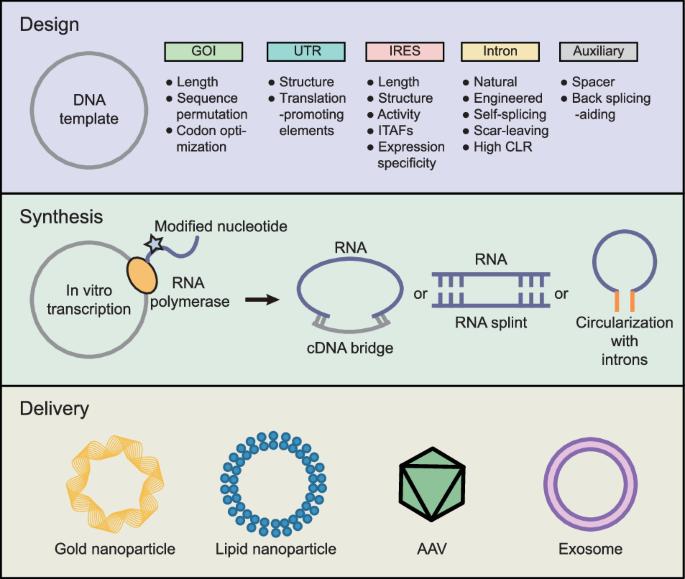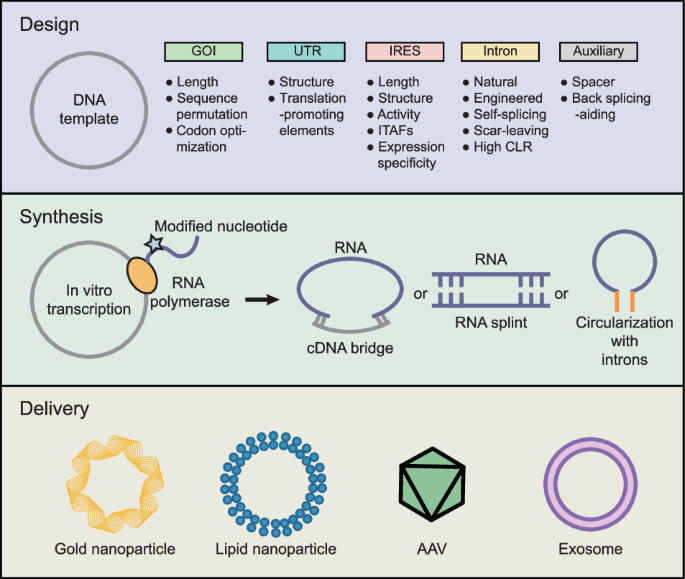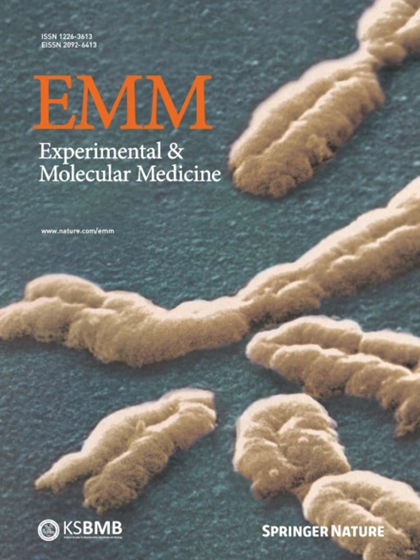Optimal design of synthetic circular RNAs
IF 9.5
2区 医学
Q1 BIOCHEMISTRY & MOLECULAR BIOLOGY
引用次数: 0
Abstract
Circular RNAs are an unusual class of single-stranded RNAs whose ends are covalently linked via back-splicing. Due to their versatility, the need to express circular RNAs in vivo and in vitro has increased. Efforts have been made to efficiently and precisely synthesize circular RNAs. However, a review on the optimization of the processes of circular RNA design, synthesis, and delivery is lacking. Our review highlights the multifaceted aspects considered when producing optimal circular RNAs and summarizes the available options for each step of exogenous circular RNA design and synthesis, including circularization strategies. Additionally, this review describes several potential applications of circular RNAs. Circular RNAs were once considered errors in splicing. However, we now understand that circRNAs are common and play roles in health and disease, including potential use in creating vaccines. This review examines ways to create and use circRNAs, with a focus on improving their creation and delivery for medical purposes. They discuss various methods, including using natural and synthetic elements to enhance circRNA formation and stability. The main findings suggest that improving the creation and delivery of circRNAs could greatly enhance their medical potential. Researchers conclude that with more development, circRNAs could become powerful tools in gene therapy and vaccine creation, offering new ways to treat diseases. The future implications of this research could transform how we approach disease treatment and vaccine creation, making therapies more effective and long-lasting. This summary was initially drafted using artificial intelligence, then revised and fact-checked by the author.


合成环形 RNA 的优化设计。
环状 RNA 是一类不常见的单链 RNA,其末端通过反向剪接共价连接。由于环状 RNA 的多功能性,在体内和体外表达环状 RNA 的需求日益增加。人们一直在努力高效、精确地合成环状 RNA。然而,关于优化环状 RNA 设计、合成和递送过程的综述还很缺乏。我们的综述强调了在生产最佳环形 RNA 时所考虑的多方面问题,并总结了外源环形 RNA 设计和合成每个步骤的可用选项,包括环化策略。此外,本综述还介绍了环状 RNA 的几种潜在应用。
本文章由计算机程序翻译,如有差异,请以英文原文为准。
求助全文
约1分钟内获得全文
求助全文
来源期刊

Experimental and Molecular Medicine
医学-生化与分子生物学
CiteScore
19.50
自引率
0.80%
发文量
166
审稿时长
3 months
期刊介绍:
Experimental & Molecular Medicine (EMM) stands as Korea's pioneering biochemistry journal, established in 1964 and rejuvenated in 1996 as an Open Access, fully peer-reviewed international journal. Dedicated to advancing translational research and showcasing recent breakthroughs in the biomedical realm, EMM invites submissions encompassing genetic, molecular, and cellular studies of human physiology and diseases. Emphasizing the correlation between experimental and translational research and enhanced clinical benefits, the journal actively encourages contributions employing specific molecular tools. Welcoming studies that bridge basic discoveries with clinical relevance, alongside articles demonstrating clear in vivo significance and novelty, Experimental & Molecular Medicine proudly serves as an open-access, online-only repository of cutting-edge medical research.
 求助内容:
求助内容: 应助结果提醒方式:
应助结果提醒方式:


